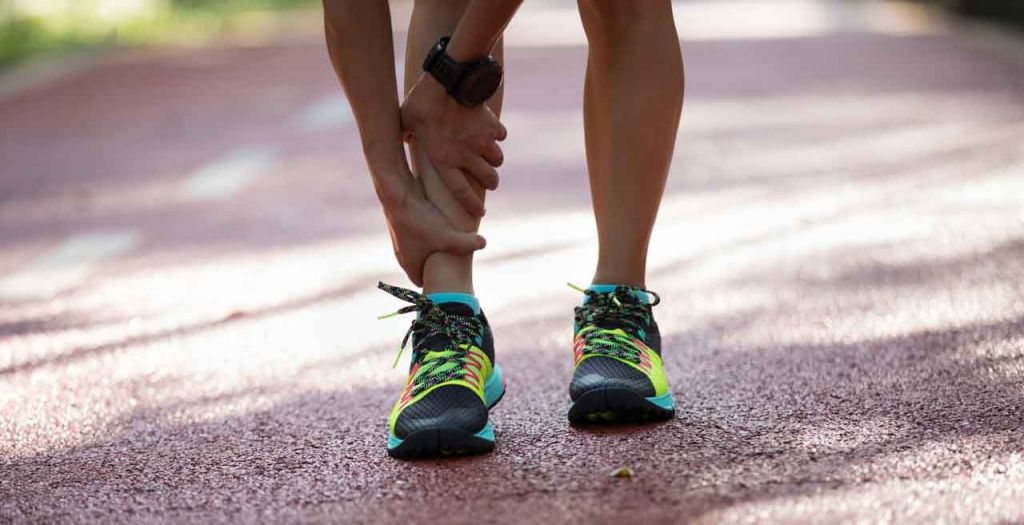Franklin Hospital issued the following announcement on Dec. 26.
Shin splints cause pain in and around your shin bone and can wreck exercise goals. Learn how to get rid of shin splints — and how to avoid them in the future.
Despite your best efforts to get in shape, you can be derailed by shin splints. This exercise-caused injury is marked by tenderness, soreness, and pain running along the inside of your tibia (better known as the shin bone). It may be accompanied by mild swelling in the bottom part of your leg, too.
The pain can occur during and after exercise, feel sharp and razor-like, dull or throbbing, or hurt even more if you touch it, the American Academy of Orthopaedic Surgeons explains. Shin splints can be so uncomfortable you’ll likely wonder what exactly caused your injury — and what you can do to never go through this pain again.
First, realize you aren’t alone. Whether a seasoned athlete or weekend warrior, shin splits are common sports injuries. Although they often occur in people who run (especially on hard surfaces), shin splints also happen to dancers and military recruits going through physical training.
In fact, shin splints can occur in anyone who works out and has recently changed or intensified their training routine, according to the American Medical Society for Sports Medicine. The increased activity, especially if you haven’t worked up to the new workout or running level, overworks muscles, tendons, and bone tissue around the tibia.
The resulting discomfort may go away when you stop exercising but, if you don’t let the shin splint heal, the pain can get worse — and might progress to more serious problems such as a stress fracture.
Fortunately, you can learn how to get rid of shin splints, most of the time, with some common-sense measures.
How to get rid of shin splints with self-help strategies.
Tips to heal shin splints and get back to your active lifestyle:
Don’t rush recovery! Shin splints are typically caused by overuse, so it can take several weeks of rest from the activity that caused the pain for you to heal. For example, if your injury resulted from running, especially on a hard surface, rest for a week or two. As you recover, skip pounding the pavement and opt for low impact exercise like swimming or using an elliptical trainer, the American Academy of Orthopaedic Surgeons advises.
Pain relievers, in moderation. Over-the-counter medications like aspirin, ibuprofen, and naproxen reduce pain and swelling. (Remember they can cause stomach upset, however, so only use them as needed.)
Ice is nice. Use cold packs for 20 minutes at a time, several times a day, to reduce pain and swelling. Once you are back to your regular exercise routine, icing may be needed afterwards for several weeks to prevent soreness, according to the American Medical Society for Sports Medicine.
Compression. Wearing an elastic compression bandage may help prevent more leg swelling.
Flexibility through stretching. Stretching your lower leg muscles can help shins feel better. But don’t over-do stretching, especially if the shin splint is still inflamed and painful, the American Medical Society for Sports Medicine warns. Instead, start slowly with two to three pain-free stretches that last 30 seconds each.
Pay attention to footwear. Wearing shoes with good cushioning during daily activities at work and home can reduce stress on your legs and help get rid of shin splints. If you have flat feet or recurring shin splits, orthotics — shoe inserts that align and stabilize your feet and ankles — can take stress off your lower legs.
Not healing quickly? Talk to your doctor. Self-help measures usually are all that’s needed to heal shin splits in a week or two. But if your pain isn’t going away, or is getting worse, talk to your doctor. You may need to be evaluated for an additional problem, such as a stress fracture.
Bottom line: Learn how to get rid of shin splints in your future
Before you return to your running or other exercise routine, you should be pain-free for at least two weeks. But don’t think because you feel great you can immediately exercise at your previous level of intensity or you could end up with a new injury.
Be sure to warm up and stretch before you start your workout and, as you increase your training and the amount of time you exercise, go more slowly than you did before your shin splints. If you begin to feel the pain from shin splints again, stop exercising, apply ice to the area and rest up for a day or two.
Sport shoes which fit properly can not only enhance performance but help prevent injuries — including shin splints. So it’s a good idea to invest in athletic shoes designed specifically for the type of running or other exercise you are pursuing.
For example, shoes for walking should have good shock absorption, smooth tread, and a sole design that encourages the natural roll of the foot during the walking motion. A shoe designed for jogging should have good traction and include cushioning, flexibility, control, and stability in the heel area, according to the American Orthopaedic Foot and Ankle Society.
Original source can be found here.

Source: Franklin Hospital


 Alerts Sign-up
Alerts Sign-up